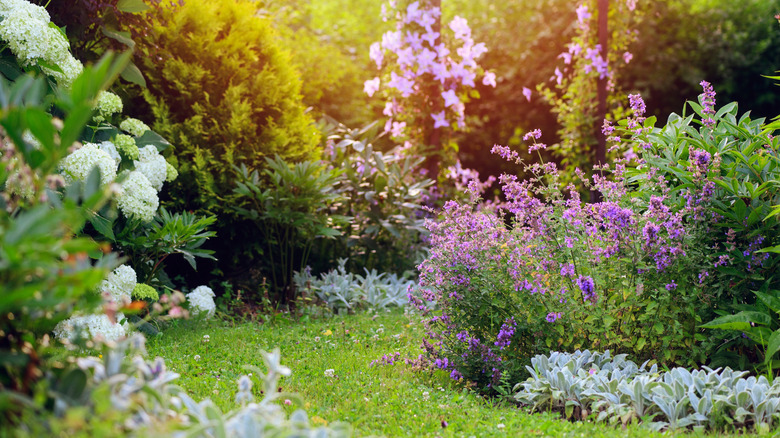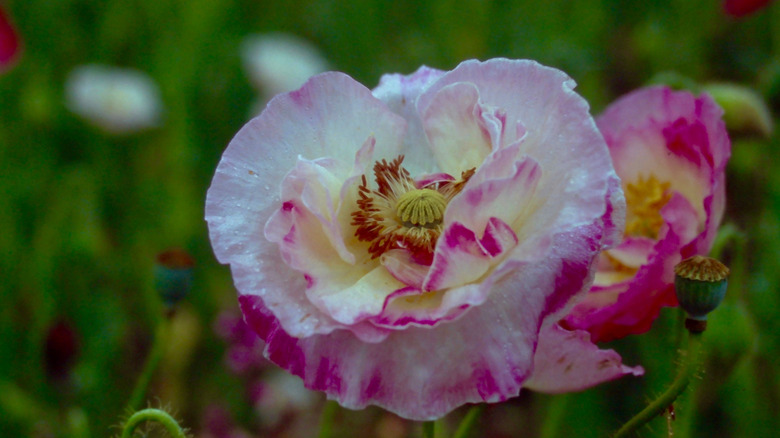The Beautiful Self-Seeding Flower That Will Beautify Your Garden With Pastel Blooms
If you are dreaming of a perfectly designed cottage garden with pastel hues, blooming wildflowers, and soft textures, look no further than the Shirley poppy (Papaver rhoeas). This cultivar of the common poppy was created by Reverend William Wilks in the latter part of the Victorian Era in the U.K., and it perfectly encapsulates vintage English wild gardens. With its delicate, ruffled petals that look just like tissue paper, the Shirley poppy harks back to a simpler time and brings beautiful shades of purple, red, pink, and orange to your garden.
As a self-seeding flower, Shirley poppies will come back year after year under the right conditions. They are also fantastic at attracting wildlife into your yard, thanks to their wealth of pollen, which is perfect for bees and syrphid flies. They will bloom in late spring and early summer, with each flower lasting a few days. Growing up to 3 feet in height, Shirley poppies are great to sow alongside other wildflowers or in borders and beds. They can also be planted in containers.
How to grow Shirley poppies
Shirley poppies can be sensitive to being transplanted, so it's best not to start them off indoors. Instead, you should sow the seeds outside in early spring or late fall. As they are quite small seeds, it is helpful to mix them with sand to allow for a better spread in your garden. Pick a spot in full sun and make sure you have prepared the soil beforehand by adding organic matter. Once you have scattered your seeds, cover them lightly with soil to help with germination. You will see seedlings pop up within a few weeks.
Once they start growing, Shirley poppies are fairly easy to take care of. Deadhead them early on in the season to promote more blooms, but you will need to slow down on this towards the end of their run. Allowing the seedheads on a few of your poppies to split open will enable them to self-sow and come back, bringing continuous color to your garden year after year. You may also wish to gather the seeds from your Shirley poppies yourself to scatter again when spring comes around.

